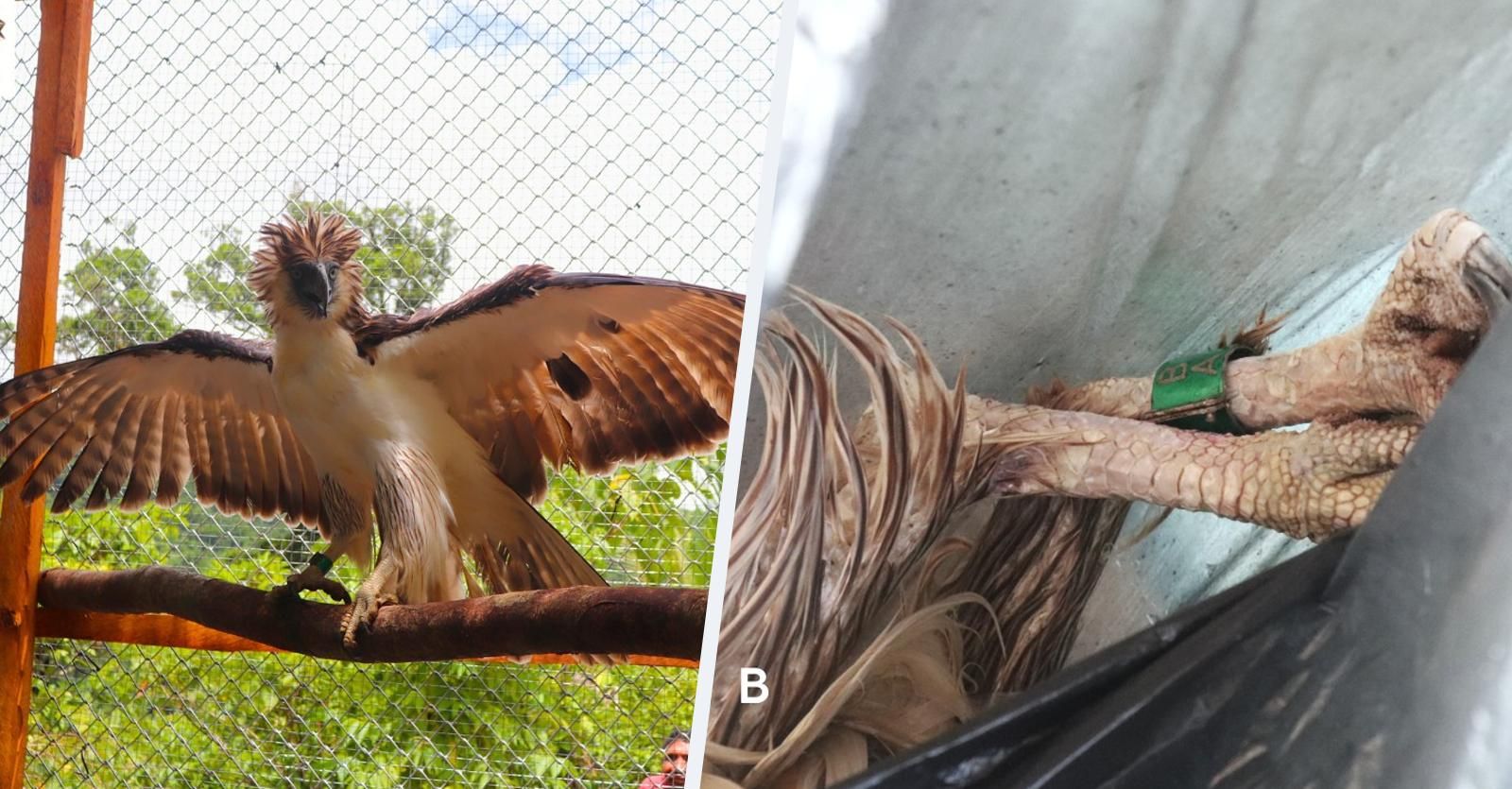
By Brian Jules Campued
Just one month after its release, a male Philippine eagle named Uswag was found dead on the sea after it crashed over the waters off Baybay City, Leyte on July 30.
Based on an incident report by the Philippine Eagle Foundation (PEF) on Monday, Uswag’s carcass was retrieved near Ponson Island in Pilar, Cebu on August 3 following 42 hours of searching for it, which covered over 1,000 hectares of sea.
PEF Director for Operations Jayson Ibañez said the last set of readings from a solar-powered global positioning system (GPS) transmitter strapped on the back of Uswag indicated the creature to be already at sea, prompting researchers and responders to begin the search for the eagle.
“Uswag was found floating along with sea debris with its GPS transmitter facing upward and its miniature solar panels exposed to the sun. The body was already beginning to decompose,” Ibañez said.
According to PEF, veterinarians found “no anomaly evident” in Uswag’s carcass as x-ray and post-mortem examination results on the bird showed no signs of fracture nor trauma, nor did they find any evidence of bullets or air gun pellets.
“Overall, there was no visible evidence of shooting, trauma, nor bodily injury and other anomalies. The cause of death is suspected to be drowning,” the foundation said.
Based on the experts’ estimates, the raptor had been dead around four to five days before it was found.
“It is very unfortunate that we lost Uswag to accidental drowning. He was healthy and fit and there was evidence based on field observations that he had already hunted successfully in the wild during the first few days after his release,” the PEF said, adding that the rains and winds may have caused the eagle to lose its flight bearings and fall to the sea.
Uswag was a three-year-old male Philippine eagle released in the mountains of Burauen, Leyte on June 28, along with a female raptor named “Carlito”.
This is the ninth documented case of wild eagles accidentally crashing at sea in the country since 1993—with all of the eagles tagged as immature, the PEF said. However, Uswag was the first reintroduced wild eagle and the first with a GPS tracking device to crash at sea.
Meanwhile, Ibañez said they will further investigate Uswag’s case as well as the crash sites to determine the release sites that have the highest risks of crashes for the eagles.
“We will further investigate and explore systematic GIS mapping and modeling of topography, wind-patterns, and other climate parameters at these crash sites to determine patterns and assess risks,” he said. – iro
